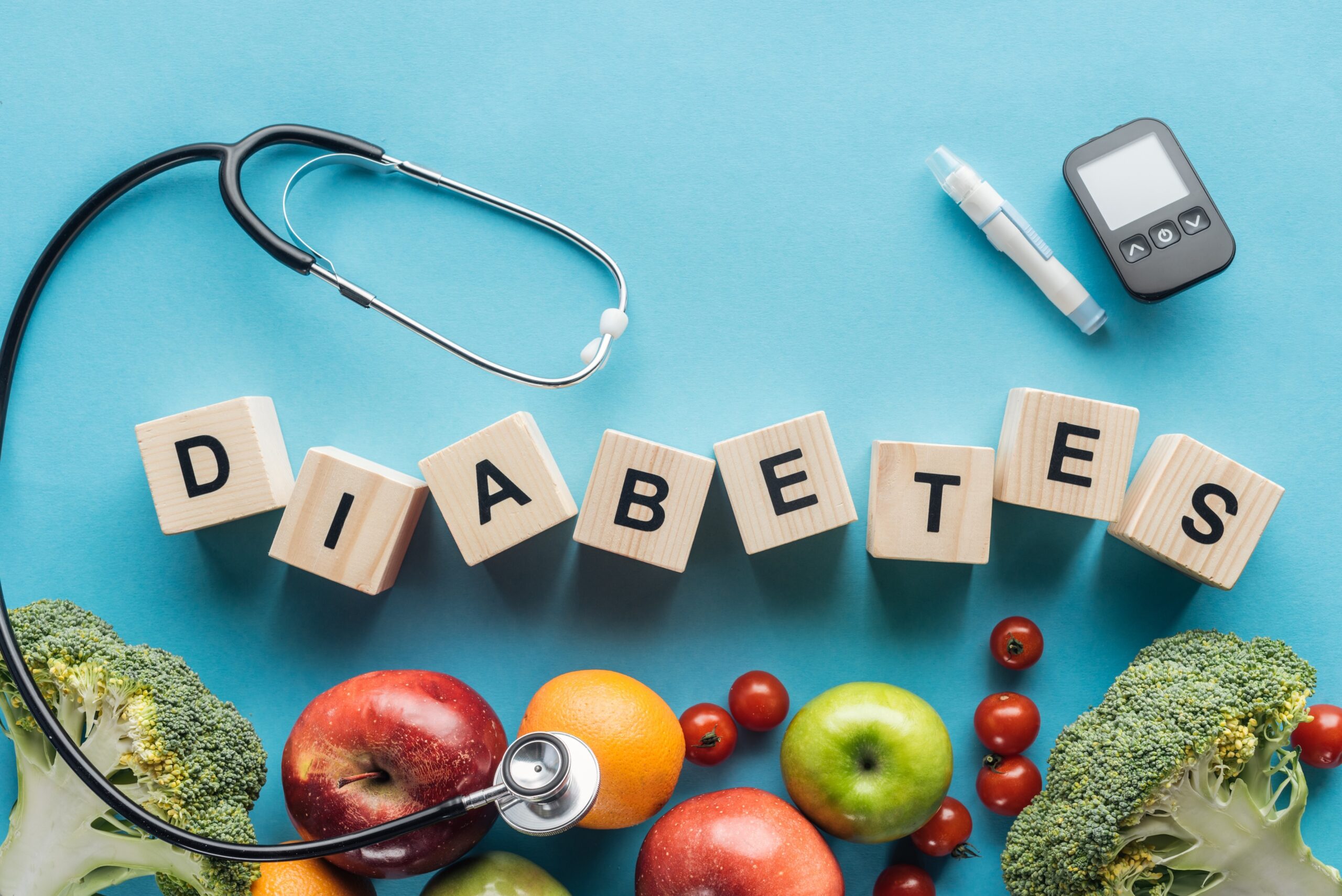What is Diabetes?
Diabetes and You Series – Part 1
What is Diabetes?
Diabetes mellitus is a condition where the glucose, or sugar level, in your bloodstream is too high. In fact, there are two main types [DS1] of diabetes, type 1 (T1DM) and type 2 (T2DM). On one hand, type 1 diabetes is rare and mainly develops in childhood. On the other hand, type 2 diabetes is common and has been considered a disease of adults in the past. However, recently, we have seen an increase in the cases of type 2 diabetes in children. Usually, this is due to the rise in childhood obesity.
Why Should I be Concerned About Diabetes?
Both types of diabetes are serious diseases. On the surface, diabetes may appear more like an inconvenience, merely requiring a pill daily for treatment. Still people with diabetes may have a normal healthy physical appearance. But the reality is that diabetes can damage multiple internal organs, which makes this a serious condition that should not be taken lightly. Rather, diabetes is an insidious illness. Type 2 diabetes mellitus is less likely to create conditions that require emergency care than type 1 diabetes. But they both are prone to creating long term damage than can shorten your lifespan. Unfortunately, long-term chronic complications are common. And they are mostly dependent on two things- how long you have had diabetes and how well-controlled it is. In fact, the long-term problems are similar in both types of diabetes.
Potential Damage Caused by Diabetes
| System | Effect |
| Vision | Blindness |
| Kidneys | Renal dialysis |
| Nerves | Chronic Pain |
| Blood Vessels | Heart Attack, stroke, feet wounds |
| Pregnancy | Fetal malformations, abnormal fetal growth |
Potential Diabetes Complications
- Vision problems – Includes blindness related to damage to the retina. And the retina is the lining of the inside of your eyeball, where the vision cells are located.
- Kidney problems – Constant high sugars damage the small blood vessels in your kidneys, making it hard for them to function. Since the kidneys clear your body of waste and toxins, the toxins will build up in your body and cause further damage if not removed. So, if the kidneys fail to function, you may need renal dialysis, which is a way to remove the toxins by filtering your blood with a machine that does the kidneys’ job.
- Peripheral neuropathy – This a fancy term that describes damage to the nerves in your legs and feet. So, peripheral neuropathy can lead to chronic pain, most commonly in your feet and legs. Also, you get numbness in your feet, which is a dangerous condition. And the numbness makes it where you do not feel pain. You may not be able to detect foot injury, which increases your risk of infection. Additionally, the damaged blood vessels in the feet make it harder for foot wounds to heal. This cycle is a set up for diabetic foot ulcers. Diabetic foot ulcers are debilitating, medically, and socially. Medically, these ulcers are painful and carry the risk of amputations or having the infection spread to your blood (sepsis). Socially, they are unsightly and malodorous, and limit your ability to exercise or even walk.
- Vascular disease – Also known as hardening of the arteries. The high blood sugar, high cholesterol, and high insulin levels often found in diabetes may add to the increased risk of vascular disease by increasing inflammation in your blood vessels, increasing the tendency for your blood to clot, and causing constriction of your blood vessels. These diseased vessels become thicker and stiffer, leading to impaired blood flow to all parts of your body but especially the brain, heart, eyes, kidneys, and feet, with an increased tendency for a complete blockage occurring due to a clot. As a result, vascular disease creates an increased risk of heart attacks and strokes. Vascular disease in your legs can lead to persistently cold feet, pain, and even amputation when severe. In men, it can lead to erectile dysfunction and impotence by affecting the arteries in the penis.
Pregnancy– diabetics who become pregnant have high-risk pregnancies. However, maintaining good glucose control, especially before conceiving, will reduce those risks. Diabetes in pregnancy is discussed in detail separately.
Am I at Risk for Developing Diabetes?
Anyone can develop diabetes; however, we do know that certain people have a higher risk than others.
Type 1 diabetes is an auto-immune disorder in which your immune system attacks your pancreas, damaging the pancreas. The pancreas is a soft, mushy gland that sits a little below your breastbone in the stomach, midway between your front and back. The pancreas is where your body makes insulin. Insulin is the hormone that breaks down the sugars we eat so our bodies can use it for energy and nutrition.
In type 1 diabetics, the body attacks and damages the pancreas, so it can no longer produce insulin. There is a genetic basis for this process, which means it runs in families. Suppose you have a close relative, such as a parent or sibling with type 1 diabetes. In that case, you are at an increased risk of developing diabetes.
More recently, there are signs that the environment may also play a role in developing type 1 diabetes. A child who has the genetic predisposition for diabetes, who is then exposed to a trigger in the environment, may develop type 1 diabetes. The possible environmental triggers are not entirely known but may include certain viruses, food allergens, or even cold climate. Viral exposure may occur in utero or in childhood. Exclusive breastfeeding and adequate Vitamin D may lower the risk of developing type 1 diabetes. Vaccine exposure and gender do not affect the risk for the development of type 1 diabetes. This is an area where research is ongoing. And answers are still incomplete.
Type 2 diabetes is a disease in which your body makes insulin but cannot properly use it. The insulin produced does not effectively break down your sugars. This is called a decreased sensitivity to insulin. So, just like with type 1 diabetes, you end up with too much sugar in your bloodstream. Anyone can develop type 2 diabetes, but we know certain people have a higher risk. The most serious risk factors are increasing age (particularly over age 45), increasing weight, and having a close relative with type 2 diabetes.
Factors That Increase Your Risk For Type 2 Diabetes
- Increasing Age.
- Sedentary Lifestyle- low activity level.
- Abnormal Cholesterol and Lipids.
- Increasing Weight.
- Polycystic Ovarian Syndrome.
- Family history- parent or siblings.
- High blood pressure.
- Certain racial/ethnic groups.
- Gestational Diabetes- diabetes in any of your pregnancies.
- Delivering a baby weighing more than 9 pounds.
Despite these risk factors, diabetes is a condition that is well within your power to control. There are many ways in which you can control your body’s exposure to or your body’s ability to breakdown glucose. The diagnosis and treatment of diabetes are discussed in parts 2 and 3 of our diabetes and you series.
Written by: myObMD writing team, June 07, 2020 | Editor: Dayna Smith, MD | Reviewed October 1, 2020 | Copyright: myObMD Media, LLC, 2020
Glossary:
- Autoimmune-immune disorder-a condition in which your immune system attacks your own body, causing that organ or system to not function properly.
- Chronic-something that lasts a long time or never goes away.
- Chronic pain-pain that persists for more than 3 months.
- Diabetic Ketoacidosis-a life-threatening emergency, usually in Type 1 diabetes, where high blood sugar levels and low insulin levels create a dangerous overproduction of acid in the bloodstream
- Endocrinologist-a medical doctor who specializes in disorders of the endocrine, or hormonal system.
- Glucose- aka blood sugar. Glucose is the main sugar in your body and its main source of energy.
- Glycosylated Hemoglobin (Hb A1C) – simply called an A1C (pronounced A-one-see). The A1C test gives an average measure of your blood sugar over a 2-3-month period.
- Insulin- the hormone that breaks down the sugars you eat so your bodies can use it for energy
- Insulin Pump-device that has small flexible plastic catheters inserted just under your skin. Kept in place for multiple days by a special adhesive and deliver continuous insulin.
- Internal Organs-the main body parts that are not visible from the outside of your body, such as your kidneys, liver, pancreas, or ovaries.
- Peripheral Neuropathy-a disorder of the nerves of the legs and/or arms, often leading to chronic pain or numbness.
- Retina- the lining of the inside of your eyeball where your vision cells are located.
- Renal Dialysis- having your blood filtered by a machine that does the job of the kidneys in removing waste and toxins from the body.
- Screening bloodwork-a test that is done to look for a condition before any symptoms are present
- Sedentary lifestyle-having little to no exercise or other physical activity in your routine
- Sepsis-a severe system-wide reaction to infection that can involve the shutdown of multiple internal organs.
- Vascular disease-also is known as hardening of the arteries. This causes impaired blood flow to the affected area of your body.
References
- Steinberg J, Carlson L. Type 2 Diabetes Therapies: A STEPS Approach. Am Fam Physician. 2019 Feb 15;99(4):237-243.
- Pippitt K, Li M, Gurgle H. Diabetes Mellitus: Screening and Diagnosis. Am Fam Physician. 2016 Jan 15;93(2):103-109.
- American Diabetes Association. Standards of Medical Care in Diabetes—2018 Abridged for Primary Care Providers. Clinical Diabetes 2018 Jan; 36(1): 14-37.
- WebMD. What to Eat When you Have Type 1 Diabetes. Reviewed by Ambardekar M 5-11-2019. https://www.webmd.com/diabetes/diet-type-1-diabetes. Accessed 6-2-2020.
- Mayo Foundation for Medical Education and Research. Type 1 diabetes. Available from: https://www.mayoclinic.org/diseases-conditions/type-1-diabetes/symptoms-causes/syc-20353011. Accessed 5-31-2020.
- Inzucchi SE, Lupsa B. Clinical presentation, diagnosis, and initial evaluation of diabetes mellitus in adults. Mulder, JE, ed. UpToDate. Waltham, MA: UpToDate Inc. https://www.uptodate.com. (Accessed on 5-27-2020).
- Wexler D, Initial management of blood glucose in adults with type 2 diabetes mellitus. Mulder, JE, ed. UpToDate. Waltham, MA: UpToDate Inc. https://www.uptodate.com. (Accessed on 6-2-2020).
- Levitsky LL, Misra M. Epidemiology, presentation, and diagnosis of type 1 diabetes mellitus in children and adolescents . Hoppin AG, ed. UpToDate. Waltham, MA: UpToDate Inc. https://www.uptodate.com. (Accessed on 5-27-2020).
- Centers for Disease Control and Prevention. Measuring Physical Activity. https://www.cdc.gov/physicalactivity/basics/measuring/index.html#:~:text=Moderate%20Intensity,%2C%20but%20not%20race%2Dwalking). Accessed 6-2-2020.
- Metformin: Generic. Epocrates Online. https://online.epocrates.com/drugs/787/metformin. Accessed 6-2-2020
- Berger JS, Newman JD. Overview of peripheral artery disease in patients with diabetes mellitus. UpToDate. Waltham, MA: UpToDate Inc. https://www.uptodate.com. (Accessed on 9-19-2020).


